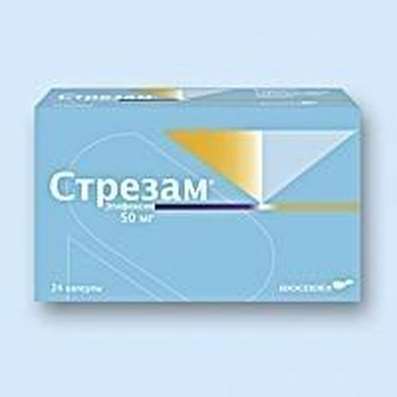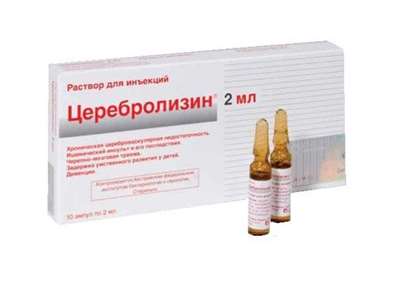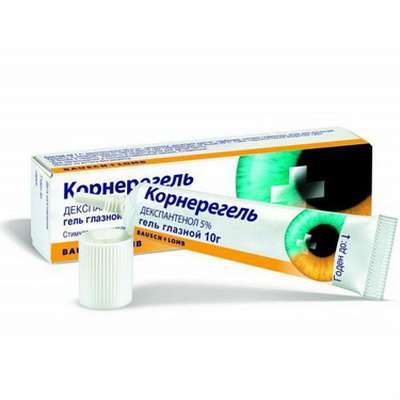Instruction for use: Olanzapine
I want this, give me price
The Latin name of the substance Olanzapine
Olanzapinum (genus. Olanzapini)
Chemical name
2-Methyl-4- (4-methyl-1-piperazinyl) -10H-thieno [2,3-b] [1,5] benzodiazepine
Gross formula
C17H20N4S
Pharmacological group:
Neuroleptics
The nosological classification (ICD-10)
F20 Schizophrenia: Schizophrenic Conditions; An exacerbation of schizophrenia; Schizophrenia; Chronic schizophrenia; Dementia praecox; Bleuler's disease; Psychotic discordant; Dementia early; The febrile form of schizophrenia; Chronic schizophrenic disorder; Psychosis of the schizophrenic type; Acute form of schizophrenia; Acute schizophrenic disorder; Cerebral Organic Insufficiency in Schizophrenia; Acute attack of schizophrenia; Schizophrenic psychosis; Acute schizophrenia; Sluggish schizophrenia; Sluggish schizophrenia with apathoabulic disorders; Acute stage of schizophrenia with agitation
F25 Schizoaffective disorders: Schizoaffective disorders; Schizoaffective psychosis; Schizoaffective disorder
F29 Inorganic psychosis, unspecified: Childhood psychoses; Psychomotor agitation in psychoses; Hallucinatory-delusional disorders; Hallucinatory-delusional syndrome; Intoxication psychosis; Manic-delusional disorders; Manic chronic psychosis; Manic psychosis; Acute psychosis; Paranoid psychosis; Subacute psychosis; Presenile psychosis; Psychosis; Intoxication psychosis; Psychosis is paranoid; Psychosis in children; Reactive psychosis; Chronic psychosis; Chronic hallucinatory psychosis; Chronic psychosis; Chronic psychotic disorder; Schizophrenic psychosis
F31 Bipolar affective disorder: Mood disorders bipolar; Affective bipolar psychosis; Manic-melancholic psychosis; Intermittent psychosis; Circular psychosis; Cyclophrenia; Bipolar disorders; Bipolar disorders; Bipolar psychosis; Affective insanity; Manic-depressive syndrome; Psycho Manic-Depressive; Depressive episode of bipolar disorder
CAS code
132539-06-1
Characteristics of the substance Olanzapine
Atypical neuroleptic of the thienobenzodiazepine class. Yellow crystalline substance, practically insoluble in water.
Pharmacology
Pharmacological action - antipsychotic, neuroleptic.
It has a high affinity for serotonin 5-HT2A (dissociation constant Ki = 4 nM) and 5-HT2C (Ki = 11 nM), dopamine D1-4 (Ki = 11-31 nM), muscarinic M1-5 (Ki = 1.9 -25 nM), histamine H1 (Ki = 7 nM), and alpha1-adrenoreceptors (Ki = 19 nM). Poorly interacts with GABA, benzodiazepine and beta-adrenoreceptors (Ki more than 10 μM). In vitro and in vivo, it has more pronounced affinity and activity for 5-HT2 receptors compared to D2 receptors. According to electrophysiological studies, selectively lowers the excitability of mesolimbic dopaminergic neurons, has an insignificant effect on the striatal neural pathways involved in the regulation of motor functions. Antipsychotic action is due to blockade of serotonin 5-HT2- and dopamine receptors, anticholinergic effects - blockade of M1-5-cholinergic receptors, drowsiness - effect on histamine H1 receptors, orthostatic hypotension - blockade of alpha 1-adrenergic receptors.
Eliminates productive symptoms of psychosis (delirium, hallucinations, thinking disorders, hostility, suspiciousness), smooths negative symptoms (emotional and social autism, introvert, poor speech). Dulls the acuteness of emotional experiences, weakens aggressiveness and impulsiveness of behavioral reactions, forms tolerance to the surrounding reality and reduces initiative. It stops the stimulation and corrects behavioral and mental disorders in patients with mental disorders. Reduces the conditioned protective reflex (a test characterizing antipsychotic activity) at doses lower than the doses that cause catalepsy. It is effective, especially at doses of 20-60 mg / day, in cases of schizophrenia refractory to therapy with typical neuroleptics: the effect gradually develops towards the end of 2 months of treatment and then rapidly increases, reaching a maximum by the end of 4 months of therapy. There is evidence of efficacy in depressive-delusional syndrome. Causes hyperprolactinemia (with prolonged admission), extrapyramidal disorders (rarely, mostly with high doses), weight gain (450 g / week or more), which can persist after discontinuation of treatment.
Well absorbed from the digestive tract, eating does not affect the speed and completeness of absorption. Bioavailability decreases by 40% due to the effect of "first passage" through the liver. Cmax is achieved after 5-8 hours. The equilibrium concentration is achieved after 1 week of daily intake and twice the plasma concentration after a single dose. The plasma concentration in the dosage range of 1-20 mg varies linearly and is proportional to the dose. Binding to plasma proteins - 93% (mainly with albumin and alpha-1-acid glycoprotein). Passes through the histohematological barriers, including the BBB. The volume of distribution is about 1000 liters. Biotransformed in the liver with the participation of isoenzymes CYP1A2 and CYP2D6 and flavin-containing monooxygenases to 10-N-glucuronide (44%) and 4-N-desmethylolanzapine (31%). Both metabolites are pharmacologically inactive at plasma concentrations created in the range of therapeutic doses of olanzapine. Slightly affects the enzymes of cytochrome P450 (the risk of unwanted pharmacokinetic interactions with other drugs is negligible). T1 / 2 depends on the age and is 49-55 hours in patients older than 65 years, 29-39 hours under the age of 65. Plasma clearance is 12-47 l / h (average 25 l / h) and decreases in 1.5 times in people older than 65 years (compared with young people), 30% in women (compared to men), 40% in nonsmokers (in comparison with smokers) and in cases of impaired liver function. It is excreted by the kidneys (57%, unchanged - 7%) and intestines (30%). It is not excreted in dialysis (due to the high volume of distribution and the high degree of binding to plasma proteins).
In studies of carcinogenicity in mice and rats treated with olanzapine at doses 0.13 to 5 times greater than MPD for 78 weeks to 2 years, an increase in the frequency of hemangioma and hemangiosarcoma of the liver (2-5 times the MPDR), adenomas and adenocarcinoma of the mammary gland (0.5-2 MPDR), associated with hyperprolactinemia. Reversible neutron and lymphopenia, hemolytic anemia, decrease in the rate of increase in body weight were noted. Mutagenic properties were not detected. Fertility disorders in males and female rats were detected at 11- and 1.5-fold excess of MPDR, respectively. In female rats and rabbits, who received olanzapine in doses 9 and 30 times, respectively, exceeding the MPD in pregnancy, there were no teratogenic properties. Early resorption of fetuses, a decrease in body weight and an increase in the number of nonviable fetuses were noted; the duration of pregnancy was prolonged at a 5-fold excess of the MPD. It is excreted in breast milk of rats (there is no data on excretion with human milk).
Application of Olanzapine
Schizophrenia and other psychotic disorders with marked productive and negative symptoms, affective disorders (treatment of exacerbations, sustained and prolonged anti-relapse therapy), acute manic or mixed attacks with bipolar affective disorder with / without psychotic manifestations, with / without rapid phase change.
Contraindications
Hypersensitivity, breast-feeding.
Restrictions on the use
Renal and / or hepatic insufficiency, benign prostatic hypertrophy, history of convulsions, Parkinson's disease, cerebrovascular disorders, Alzheimer's disease, diabetes mellitus, eosinophilia, myeloproliferative diseases, paralytic ileus, angle-closure glaucoma, simultaneous use of drugs prolonging the QT interval (especially in elderly age), dehydration, hypovolemia, myocardial infarction in anamnesis, heart failure, breast cancer, incl. in the anamnesis, pregnancy, age till 18 years (safety and efficiency are not established).
Application in pregnancy and lactation
In pregnancy - with caution, comparing the intended benefit to the mother and the potential risk to the fetus.
The action category for fetus by FDA is C.
For the duration of treatment, breastfeeding should be discontinued.
Side effects of Olanzapine
From the nervous system and sensory organs: dizziness, headache, migraine, weakness, asthenia, drowsiness, insomnia, anxiety, hostility, agitation, euphoria, amnesia, depersonalization, phobia, obsessive-compulsive symptoms, neuralgia, facial nerve paresis, hypoesthesia, Extrapyramidal disorders, incl. late dyskinesia, ataxia, neck stiffness, muscle twitching, tremor, akathisia, dysarthria, stuttering, syncope, delirium, suicidal tendencies, stupor, coma, subarachnoid hemorrhage, stroke, nystagmus, diplopia, mydriasis, pigmentation in the lens, cataracts, xerophthalmia, eye hemorrhage, accommodation disorder, amblyopia, glaucoma, corneal damage, eye pain, keratoconjunctivitis, blepharitis, noise and pain in the ears, deafness, impaired taste sensations.
From the cardiovascular system and blood (hematopoiesis, hemostasis): orthostatic hypotension, tachy and bradycardia, palpitations, ventricular extrasystole, ECG changes, cardiac arrest, cyanosis, vasodilation, transient leuko- and neutropenia, eosinophilia, leukocytosis, thrombocytopenia, hemorrhagic syndrome.
On the part of the respiratory system: rhinitis, pharyngitis, laryngitis, voice change, coughing, dyspnea, apnea, bronchial asthma, hyperventilation.
On the part of the digestive system: increased appetite until bulimia, thirst, dry mouth, increased salivation, aphthous stomatitis, gingivitis, glossitis, dysphagia, belching, esophagitis, nausea, vomiting, gastritis, gastroenteritis, enteritis, melena, rectal bleeding, constipation, flatulence, stool incontinence, transient increase in hepatic transaminase activity, gamma-glutamyltranspeptidase and creatine phosphokinase, hepatitis.
On the part of metabolism: hyperprolactinaemia, increase (rarely decrease) in body weight, diabetes mellitus, hyperglycemia, diabetic ketoacidosis, diabetic coma, goiter.
On the part of the genitourinary system: dysuria (including polyuria), hematuria, pyuria, albuminuria, urinary incontinence, urinary tract infections, cystitis, decreased libido, impotence, ejaculatory disorders, priapism, gynecomastia, galactorrhea, mammary glands, fibrosis uterus, premenstrual syndrome, meno- and metrorrhagia, amenorrhea.
On the part of the musculoskeletal system: arthritis, arthralgia, bursitis, myasthenia gravis, myopathy, spasms of calf muscles, bone pain.
On the part of the skin: photosensitization, alopecia, hirsutism, dry skin, eczema, seborrhea, contact dermatitis, ulcerative skin lesions, skin discoloration, maculopapuluse rash.
Allergic reactions: urticaria.
Other: fever, chills, flu-like syndrome, lymphadenopathy, chest or abdominal pain, peripheral edema, withdrawal syndrome, possibly abuse.
Interaction
Activated charcoal (1 g) reduces Cmax and AUC by 60%. A single dose of cimetidine (800 mg) or aluminum and magnesium-containing antacids does not affect the bioavailability of olanzapine. Carbamazepine (400 mg / day) increases the clearance by 50%. Drugs that induce the activity of CYP1A2 and glucuronyltransferase (omeprazole, rifampicin, etc.), increase the excretion of olanzapine; inhibitors of CYP1A2 (fluvoxamine, etc.) reduce it. Fluoxetine (60 mg once or 60 mg daily for 8 days) increases Cmax of olanzapine by 16% and reduces its clearance by 16%. In clinical trials, it was shown that a single administration of olanzapine against imipramine, desipramine, warfarin, theophylline or diazepam was not accompanied by a suppression of the metabolism of these drugs. There were no signs of drug interaction when combined with lithium or biperidenum. Against the background of the equilibrium concentration of olanzapine, there was no change in the pharmacokinetics of ethanol; with simultaneous admission, it is possible to enhance the pharmacological effects of olanzapine, in particular sedation. With simultaneous admission with diazepam, ethanol and antihypertensive agents, the risk of orthostatic hypotension increases. Enhances the effect of anticholinergics. Weaken the effect of levodopa and other dopamine receptor agonists. The likelihood of an increase in the level of hepatic transaminases increases with simultaneous administration with hepatotoxic agents. Clinically significant pharmacokinetic interaction between olanzapine and valproate is unlikely.
Overdose
Symptoms: nausea, aspiration, agitation, aggressiveness, drowsiness, speech confusion, extrapyramidal disorders, respiratory failure (respiratory center depression), arterial hyper- or hypotension, tachycardia, arrhythmia, cardiac and respiratory arrest, impaired consciousness, CNS depression (from sedation up to coma), delirium, convulsions, malignant neuroleptic syndrome. The minimum dose for acute overdose with a lethal outcome was 450 mg, the maximum dose for an overdose with a favorable outcome (survival) is 1500 mg.
Treatment: gastric lavage (it is not recommended to induce vomiting artificially), reception of activated carbon, laxatives, ECG monitoring, maintenance of vital functions, ventilation. There is no specific antidote. Dialysis is ineffective. If necessary, vasopressor therapy should avoid the appointment of dopamine, epinephrine and other sympathomimetics (increased hypotension due to the summation of effects of beta-agonists and alpha-adrenergic blocking action of olanzapine).
Routes of administration
Inside.
Precautions for the substance Olanzapine
When combined factors that slow the metabolism of olanzapine (female, elderly, non-smokers), should be used in a reduced dosage. It requires careful monitoring of patients with suicidal tendencies, especially at the beginning of treatment. During treatment, the activity of liver transaminases should be monitored regularly, especially in patients with impaired hepatic function. With caution appoint drivers of vehicles and people whose activities require increased concentration and speed of psychomotor reactions. During the treatment, alcohol intake is excluded. When symptoms of a malignant neuroleptic syndrome (fever, muscle tension, akinesia, tachycardia, leukocytosis, increase of creatine phosphokinase), immediate withdrawal of the drug is needed. Given the possibility of developing akathisia, when there is a relapse in the treatment of motor anxiety, restlessness, a constant desire for movement, a reduction in the dose and administration of antiparkinsonian agents is necessary.

 Cart
Cart





